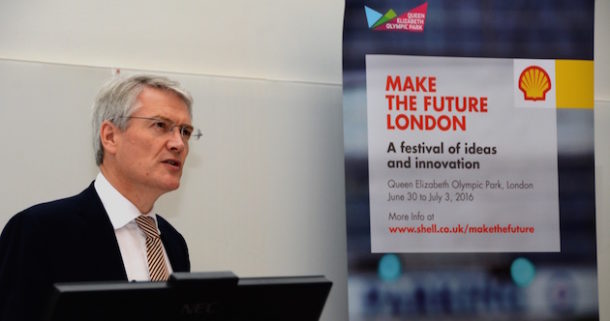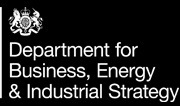
Event review: LowCVP Conference 2016: Low Carbon Automotive – a much needed area of future certainty for the UK
The LowCVP Conference 2016 looked at a range of issues including a new APC report on the UK’s low carbon automotive capabilities, as well as potential changes for the UK’s low carbon automotive industry after Brexit. At a time when the country was dominated by uncertainty following the EU Referendum, reassurance was provided by a number of speakers including Transport Minister Andrew Jones MP…
THE UK’S LOW CARBON VEHICLE SECTOR HAS THE FULL SUPPORT OF GOVERNMENT, AS SHOWN BY NEW FUNDING TO REDUCE CARBON FROM TRUCKS – TRANSPORT MINISTER ANDREW JONES MP
Following the Brexit vote that no-one was expecting and the subsequent turmoil in Westminster, the message from Andrew Jones was that business will continue as usual, and the government’s commitment to the low carbon agenda is unchanged. This statement was reinforced by the fifth carbon budget which went through Parliament on the day of the LowCVP Conference. Tied in with the UK’s CO2 reduction targets is the government’s aim for all new cars and vans to be ultra-low emission vehicles (ULEVs) by 2040.
Andrew Jones made an announcement about new funding for greener trucks at the conference. This aims to encourage cleaner HGV technology, with £20m for concept technologies to be trialled by working fleets, £15m to help hundreds of green trucks to get into service, and £4m for refuelling infrastructure. There will also be a government-backed accreditation scheme to test technologies in the real world.
Andrew concluded by saying that the government is entirely committed to the low carbon agenda.
MOST LOW CARBON LEGISLATION WILL REMAIN AFTER THE BREXIT VOTE – MICHAEL JACOBS, ACTING ASSOCIATE DIRECTOR FOR ENERGY, TRANSPORT AND CLIMATE, IPPR
The headline from Michael Jacobs was that the UK government needs to seek to reduce uncertainty where it can.
Michael talked about the UK playing a leading and active role in the Paris climate agreement – a triumph of international agreement and unity – a very different situation to the week following the Brexit vote.
The majority of the UK’s manufacturing industry wanted to remain in Europe, as did most environmentalists. Since the vote to leave the EU, uncertainty has been the order of the day, but there should be no immediate short-term changes to regulations. UK low carbon policy will still be driven by the 2008 UK Climate Act, and on the same day as the conference, the fifth carbon budget was laid before Parliament.
Air quality, vehicle emissions and fuel economy standards also won’t change – although the UK will no longer be fined by Europe for breaching air quality standards in cities.
Although all this provides some much needed certainty, Michael made the point that the UK government needs an energy policy framework that goes beyond 2020.
He also explained that there are two ways to leave Europe. The first is the ‘Norway model’, where the UK would remain as part of the EU economic area, retaining access to the single market. This would be crucial to Britain’s economy, and almost all laws will still apply – as per Norway. A second option is also a possibility, where the UK would no longer be part of the EU economic area, but this would still mean that laws relating to vehicles and air quality would be retained, so the majority of the work to lower the UK’s vehicle emissions would still need to be progressed.
THE EU VOTE DOESN’T CHANGE THE UK’S CARBON REDUCTION TARGETS – JACK SNAPE, COMMITTEE ON CLIMATE CHANGE
Jack talked about the fifth carbon budget, which went before Parliament on the day of the conference, and the five year limits to keep us on track to the 80% carbon reduction figure from a 1990 baseline by 2050, as laid down in the 2008 Climate Change Act. As this was legislated by UK Parliament, the EU vote doesn’t change anything. Carbon reductions to date have been driven mainly by the power sector, and to meet the future targets, maximum decarbonisation of the electricity sector is crucial. Although transport has made progress, it is now the biggest emitting sector; more work is needed by 2030.
HOW THE UK IS PLACED TO DEVELOP AND BENEFIT FROM THE LOW CARBON PROPULSION TECHNOLOGIES OF THE FUTURE – IAN CONSTANCE, CHIEF EXECUTIVE OFFICER, ADVANCED PROPULSION CENTRE
Ian acknowledged that there was disappointment in the automotive industry at the Brexit vote, but that we “have to get on with it now”. The UK needs to continue innovating, and the APC has launched a capability study which highlights opportunities where the UK is well placed to develop new low carbon automotive technologies, in a scenario where the production of internal combustion engines will decrease over time. There is a limited window of opportunity for UK supply chain companies in the areas highlighted, such as electric powertrains and lightweighting, and collaboration between suppliers is critical. Ian also added that UK automotive suppliers need to market themselves better on the world stage.
In conclusion Ian announced that the latest APC 6 funding competition had been launched, together with a new small and medium supply chain development competition, supported by the Niche Vehicle Network, with lower levels of project investment required than the multi-million pound APC competitions.
CARS AND ENERGY: THERE WILL BE MORE CHANGES IN THE NEXT FIVE YEARS THAN IN THE PAST 100 YEARS – FRANCISCO CARRANZA, MANAGING DIRECTOR, RENAULT-NISSAN ENERGY SERVICES
Francisco said that cars and energy, two very traditional industries, are facing a big (and exciting) moment – there will be more changes with cars and their energy use in the next five years than in the past 100 years.
Cars are parked more than 90% of the time. This means that EVs offer significant grid storage potential – ie. they will become assets. If all cars connected to the grid in the UK were used for energy services, they could power the UK, France and Germany. If EVs were used in this way to help balance out the peak demand times for the grid, could EV prices be reduced? This could lead to a completely new business model for car manufacturers. Combined with the impact of the digital/technology community on the automotive industry, who or what will be ‘Uber-ed’ next?
COLLABORATION BETWEEN THE AUTOMOTIVE AND ENERGY INDUSTRIES WILL BE REQUIRED TO IMPLEMENT NEW SOLUTIONS – DAVE ROBERTS, EA TECHNOLOGY, MY ELECTRIC AVENUE PROJECT LEADER
Dave Roberts from EA Technology explained how the My Electric Avenue project had shown that at least 30% of local electricity networks will need some form of reinforcement when 40% of houses in a street have electric vehicles. A new follow-on project to My Electric Avenue will be launched at the Cenex LCV2016 event which will allow us to grow from 40% to 100% of EVs in a street. However collaboration between the automotive and energy industries will be required to implement new solutions. Dave suggested the scenario where a person buying or leasing an EV could be provided with a battery for free and they could get paid under contract to provide energy back to the grid when needed.
ACCELERATING CLEANER AIR QUALITY IN LONDON, STARTING WITH BUSES AND TAXIS – VAL SHAWCROSS CBE, DEPUTY MAYOR OF LONDON FOR TRANSPORT
The new Deputy Mayor of London for Transport, Val Shawcross, said that poor air quality was the number one political issue and there are now plans to improve air pollution in London quicker than previously envisaged.
This is against a background of changes such as a huge rise in the numbers of minicabs in the capital – now over 100,000 – a situation which threatens the existence of London’s 25,000 black cabs. There’s also been a massive increase in vans delivering on-line orders. Factors such as these have not helped to improve air quality in London. So Val Shawcross is aiming for a modal shift, including the goal of more people walking and cycling.
There are proposals to expand London’s ultra-low emission zone to London-wide from 2020 for heavier vehicles. Older vehicles cause significant damage, and there is a need to ensure the use of vans is more efficient. Eight hydrogen refuelling stations are due before the end of the year, with three of these on petrol forecourts.
TfL will be taking a lead with its bus fleet (across London buses are currently responsible for 25% of air pollution from transport) – including introducing new electric buses and retrofitting older buses to bring them up to the much cleaner Euro 6 standards. The overall ambition is a transition away from conventional fuels, with a third of the fleet of 8,000 buses being zero emission by 2020. Ideally Val doesn’t want to see any more diesel buses being purchased as soon as possible.
A similar approach is being taken with London’s black cabs. Soon, new diesel taxis will no longer be licensed. Black cabs will need to be zero emission capable for a range of 30 miles, with maximum emissions of 50g/km CO2. TfL will support this with a financial package, including a programme to deliver electric charge points for black cabs.
The new Mayor is launching a consultation about how to deliver improvements quicker, including an extra charge on the oldest, most polluting vehicles – on top of the Congestion Charge.
ARE AUTOMATED VEHICLES AUTOMATICALLY LOW CARBON? DR ZIA WADUD, ASSOCIATE PROFESSOR, INSTITUTE FOR TRANSPORT STUDIES, UNIVERSITY OF LEEDS
There is a commonly-held assumption that automated vehicles will be more efficient than today’s vehicles, and therefore they will be lower carbon. However Dr Zia Wadud, Associate Professor, Institute for Transport Studies, University of Leeds, said that this is not necessarily a given. Energy and carbon benefits are potentially large, but not guaranteed.
A new study by the Institute for Transport Studies (ITS) at the University of Leeds, commissioned by the Low Carbon Vehicle Partnership (LowCVP) and the Institution of Mechanical Engineers (IMechE), shows that better coordination and connectivity between vehicles and infrastructure is likely to improve energy efficiency, as well as potentially make road transport safer and quicker.
The combination of connectivity, automation plus shared vehicle ownership and use has the potential to make car travel greener and cheaper, cutting energy use and helping accelerate the introduction of low carbon vehicles. However, these energy and carbon benefits are by no means guaranteed and will require strategic policy interventions to maximise them.
LOWCVP CONFERENCE – HOW ARE THEY ADDRESSING LOW CARBON TRANSPORT ISSUES – ANDY EASTLAKE, MANAGING DIRECTOR, LOWCVP
Andy explained how the LowCVP is addressing many of the issues discussed at the conference, and that the organisation played a key role in the development of the new Low Carbon Accreditation Scheme for HGV technology announced at the event by Transport Minister Andrew Jones.
The LowCVP Conference 2016 took place at Here East, home to the Digital Engineering and Test spoke of the UK’s Advanced Propulsion Centre in London’s Olympic Park.
Also taking place at the Olympic Park at the same time was the Shell ‘Make the Future London’ exhibition including the Shell Eco-marathon – see our separate report.





